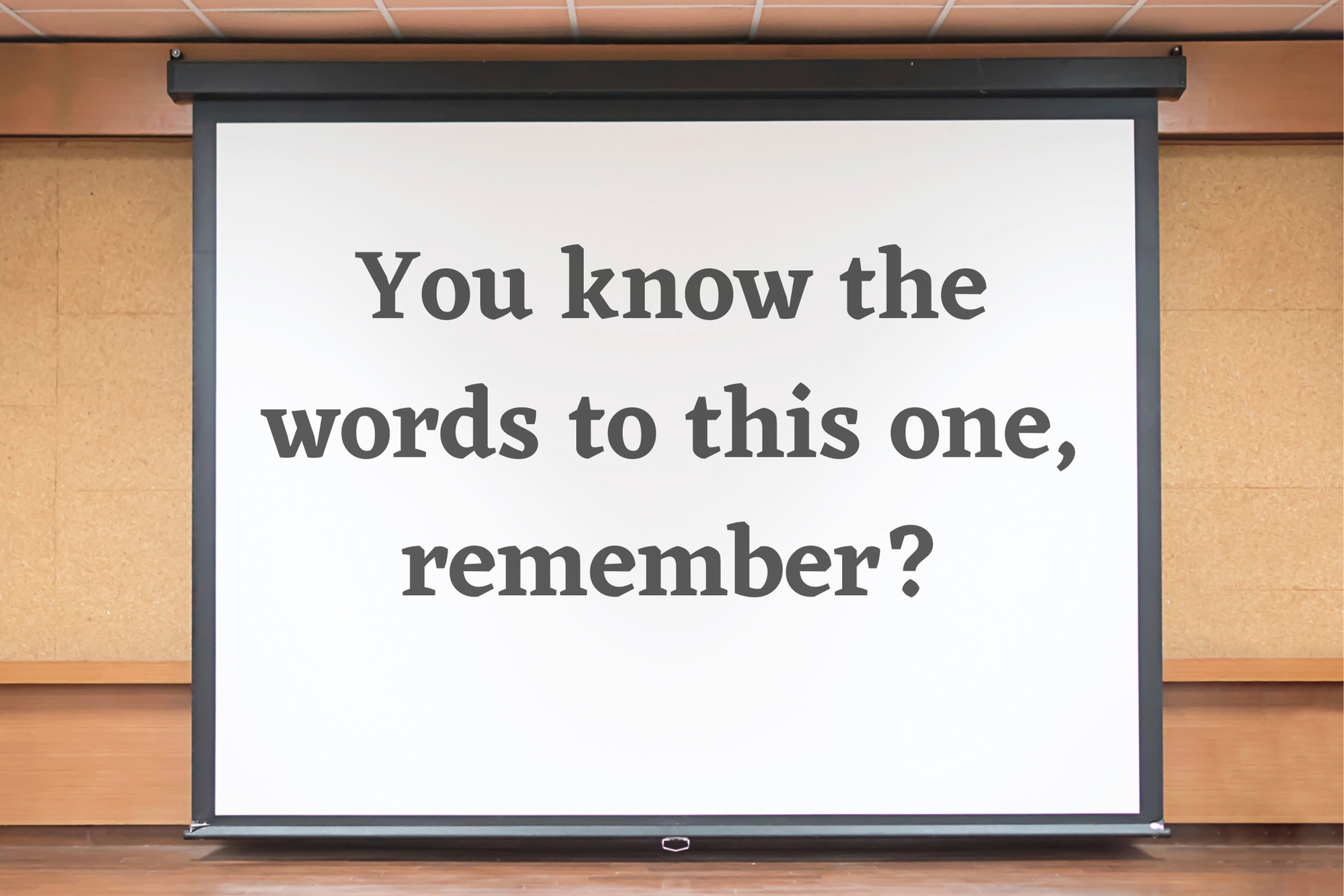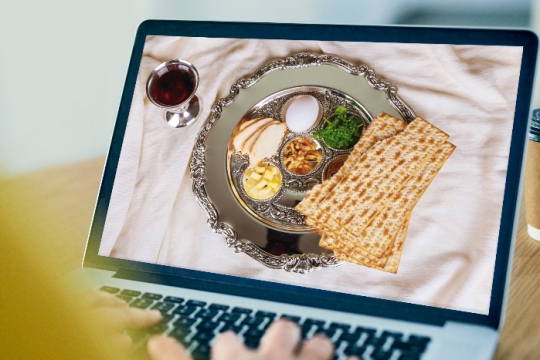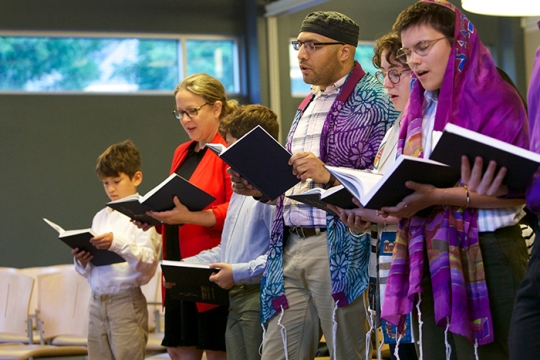
Visual Tefilah is an invaluable tool. Some congregations have used it for years, and during the pandemic it has become much more prevalent in our prayer spaces.
Presenting slides during Zoom or Facebook Live worship without prayerbooks allows us to share with congregants beloved readings and texts, while offering access to our prayers in Hebrew, English, and transliteration. We can add in songs or videos, pictures or prayers and poems unique to our communities as enhancement to the prepared Visual Tefilah slides of the CCAR.
Now that many are returning to their buildings for some form of on-site worship, a number of congregations have dedicated the needed resources to continue Visual Tefilah. Whether it's to ensure safety around touching books (while it appears this is safe, many are understandably hesitant), to allow the individuals on-site to see people on-line via zoom, or just appreciate the creative flourishes this technology allows, it has become clear that Visual Tefilah is here to stay.
I have had many questions since the introduction of Visual Tefilah, and while I have shared them with a few colleagues over the years, I was frequently a minority voice. Over time, I have come to appreciate so much of what Visual Tefilah has to offer and how it is helpful in many ways. But I now have new concerns.
A case in point: The congregation I serve in a part-time capacity has been singing Debbie Friedman's (z'l) setting of Mi Shebeirach, the prayer for healing, every week almost without fail since it was written. Over many years and services, the congregation sang this prayer by heart with feeling and emotion, while I did what I felt called to do - look each person in the face slowly and purposefully as a way to connect and lift everyone. Together, we built the resilience, the strength, and the courage to face our own healing journeys or to support those who are struggling and need our loving care.
Yet, during the recent Holy Days and Shabbatot, I noticed something that perhaps those of you who have been using Visual Tefilah for a long time may have already observed: people stared at the words on the screens in the sanctuary even when they knew every word of Mi Shebeirach by heart . I was surprised and saddened to watch every single face staring up at the screen, whereas before they would look at the bimah, out the windows, at a loved one whose hand they were clutching, or into the faces of the clergy who were connecting with them visually.
What is the cause of this trend and what about it is agitating me?
In the sanctuary, they might not want to look away from the compelling visuals we put up, whether it's simple art around the text or just the very large words. Or perhaps we've become insecure; when we didn't have words to look at, we just went with the rest of the group, trusting we'd be led by the clergy. Now that there are words to look at, we lean on them. Of course, for many it has become a habit to look at screens throughout the day, and Visual Tefilah might just conform to that pattern.
I do not believe we should pray without text, not only because it roots us in our tradition, but also because many seeing people use text to learn the Hebrew, to try the transliteration as support, to receive inspiration from translation. And, in the spirit of inclusivity, others who are not as familiar with the liturgy in our worship spaces should have access to all the words in order to feel a part of the experience that too often the "regulars" assume everyone knows. Text is important.
But I also believe that we use a prayerbook differently than a screen; we look into it and then look away. We have it open on our lap, or we put our finger inside to hold our place when whispering to our neighbor, or let our hearts wander out the window. We use the prayerbook as a guide, not the main attraction.
I've considered whether these concerns are possibly just about my ego. The song leader in me has led services for much of my life without supplemental songsheets (who had time for those blue mimeograph machines?!). I have always been able to support, lead, and cue a group with my face and body. Perhaps that is no longer necessary.
I encourage our communities to think about less "leader led" worship. We want to empower the congregation to take charge of their own prayer experiences and not just wait for the clergy. So, isn't the fact that they are no longer looking at me a good thing? Isn't this the best direction to go?
If the group were leading themselves or relying on each other to lead, I might indeed say, bravo! But I fear the pendulum has swung too far in the other direction, and we have replaced trusting the group, our instinct, our memory, and our voices-and, yes, our leaders-with large screens.
I reached out to Rabbi Dan Medwin, the director of digital media at the CCAR, about the questions this raises. He agrees that Visual Tefilah is here to stay and has become the norm in many communities. However, he has always worked to help congregations find meaningful ways to provide content that allows time to look away, creates minimal distraction from the communal experience, and allows for prayerful experiences that are not themselves guided only by content on the screens.
As we continue to learn how to make the most of multi-access worship as well as all the new technical tools we've acquired during the pandemic, I strongly encourage us to take a purposeful look at how we are curating the on-site experience. We want to be building relationships in the room, creating an atmosphere of spontaneity and free flowing prayer with appropriate give and take between the leaders and the congregants. I believe this is the future of how we pray.
I do not advocate tearing down the screens. I support Visual Tefilah. But this is the moment for us to find ways that it can complement the sacred shared experience, creating connection without distraction, and new meaning without losing the old heart and soul.
Related Posts

Digital Content to Enliven Your Passover Seder

Bring Your Words to Life: Making Online Worship Accessible

